AMD Radeon R7 260X, R9 270X and R9 280X Review
AMD has recently relaunched and rebranded its Radeon line of graphics cards. The first step of this was setting the "baseline" of the new product series with the launch of the Radeon R7 260X, R9 270X and R9 280X. These are a rebrand of the Radeon HD 7790, 7870 GHz and 7970 GHz - respectively. Outside of a few upward frequency tweaks, the real big news is a drastic price cutting of each card in the new product stack.
The R9 280X now has a street price of $299, down from the $499 7970 GHz. The R9 270X now sells for $199, versus the previous $349 of the 7870 GHz. A 4GB R9 270X will also be available for $229. The R7 260X will sell for $139 and come standard with 2GB of RAM. The HD 7790 1GB version sold for $150, and a 2GB variant sold for $170.
The two high end cards have massive price drops of $200 and $150 respectively. This puts high end graphics and Eyefinity well within the reach of many gamers. One additional improvement in the new boards comes from easier Eyefinity configuration. If you use three matching monitors, you no longer need to use at least one DisplayPort connector. With three matching monitors you can use 2x DVI-D and 1xHDMI connectors for Eyefinity. I have personally tested this on a Sapphire R9 280X using 2xDVI and one HDMI>DVI cable. It worked without a hitch. Just make sure you find a board that has both 2x DVI-D and an HDMI connector, and you're good to go.
In this article we'll run the cards through a series of quick tests in Metro Last Light, DiRT Showdown and Unigine Valley. To showcase the similar performance I tested the HD 7000 series with the 13.4 WHQL driver, and the 13.11 Beta driver (released for the R7 and R9). I then tested the new R7 and R9 cards with the same 13.11 Beta driver. Everything was tested in 1080p HD and Eyefinity.


Specifications
| Card | GPUs | Transistors | Memory | Bus Width | Shaders | Clock (MHz) | TDP (Watts)* | Power | MSRP | ||
| Core | Mem | Idle | Max | ||||||||
| AMD R9 280X | 1 | 4.3B on 28nm | 3GB | 384-bit | 2,048 | 1,050 | 1,500 | <3 | 250* | 8+6-pin | $299 |
| AMD R9 270X | 1 | 2.8B on 28nm | 2GB | 256-bit | 1,280 | 1,050 | 1,400 | <3 | 180* | 6+6-pin | $199 |
| AMD R7 260X | 1 | 2.08B on 28nm | 2GB | 128-bit | 896 | 1,100 | 1,625 | <3 | 115* | 6-pin | $139 |
| *These values represent the maximum wattage allowed through the AMD PowerTune. Idle is based on a "long idle" scenario. | |||||||||||
Testing
System Specs
I have updated my testing rig, and moved from an Intel Core i7-2600k to an AMD FX-8350. As before, everything runs at stock clock speeds.
- Windows 7 SP1
- ASUS Formula V CrossFire
- AMD FX-8350 at 4.2GHz
- 8GB G.Skill DDR3 RAM
- 1x 480GB SanDisk Extrme SSD
- 1x Samsung 500GB T-Series HDD
- LG Super Multi Blu (HD-DVD/Blu-Ray Player)
- Onboard audio
- Corsair HX1000
- My Open PC PCI ProCase
- Corsair K90 Keyboard and M90 Mouse
- Ergotech Heavy Duty Triple Desk Stand - WSGF Edition
- 3x Dell U2211H IPS 16:9 1920x1080 Displays
Radeon R9 280X
 >
>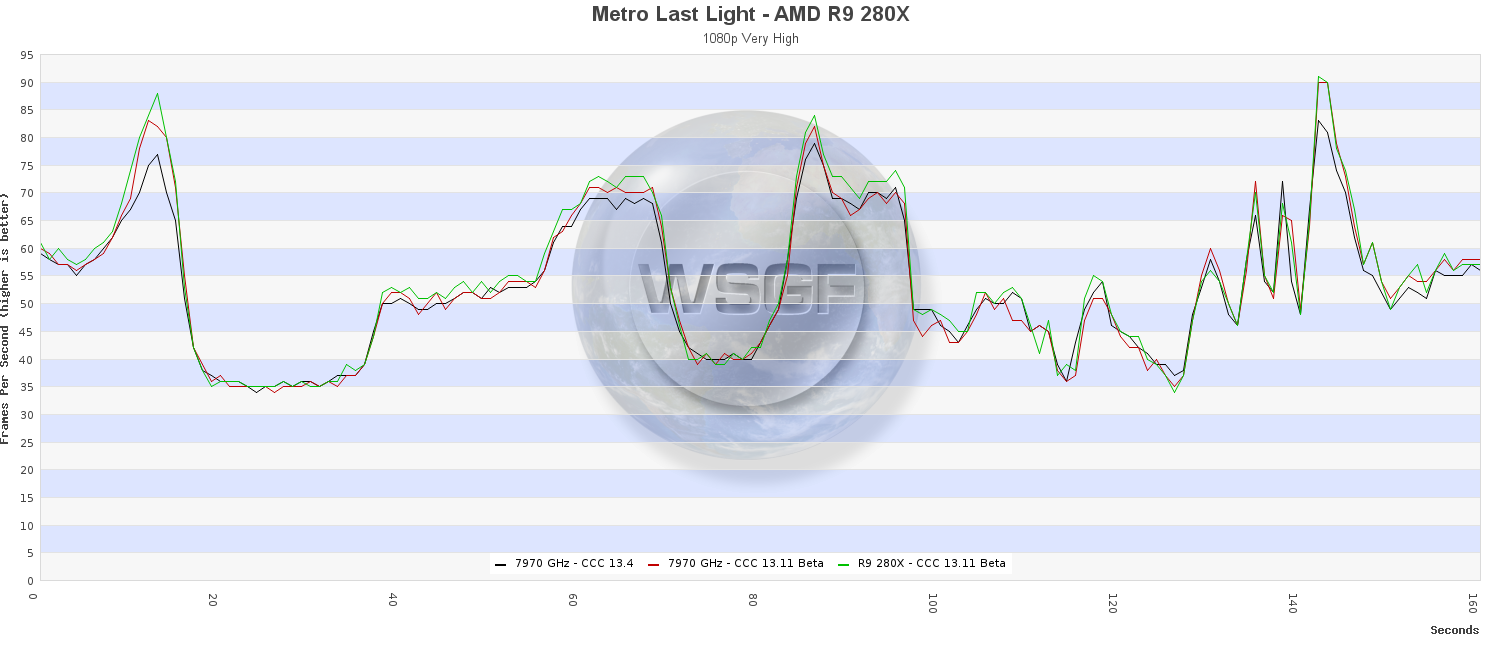


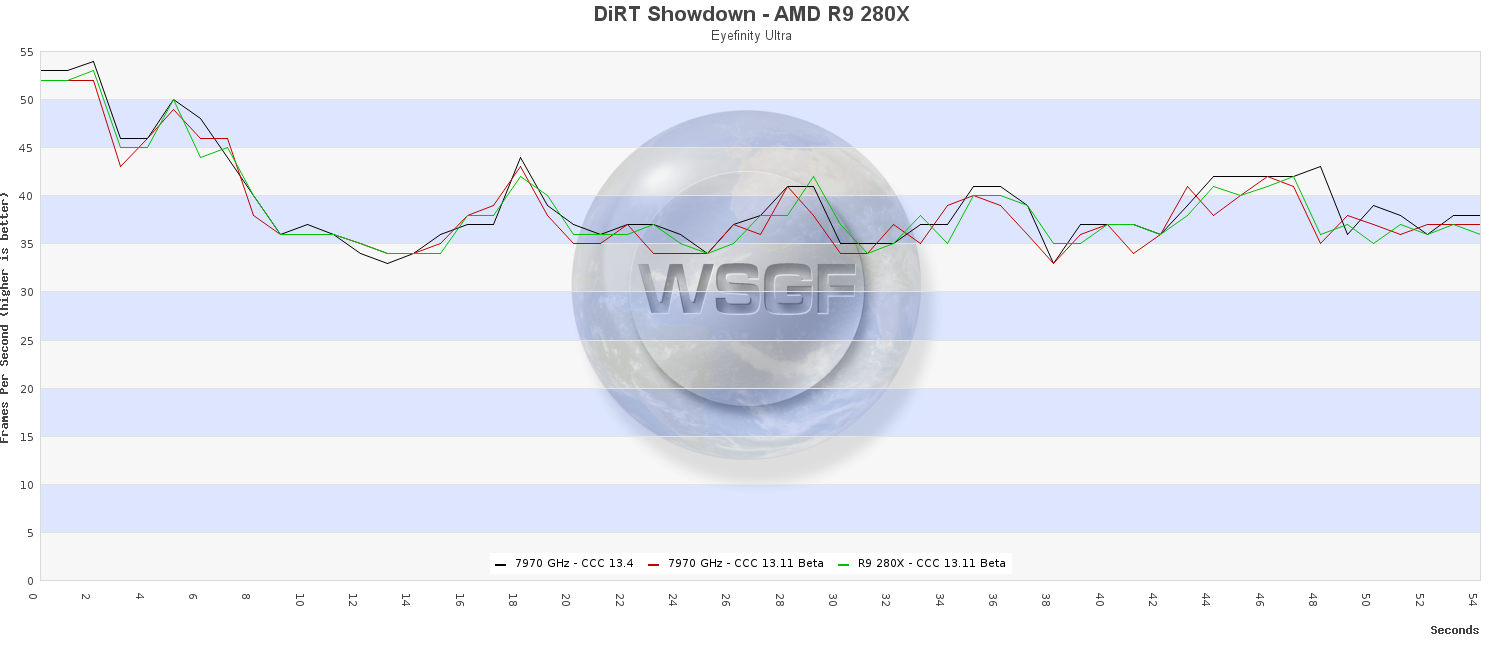


Radeon R9 270X
 >
>
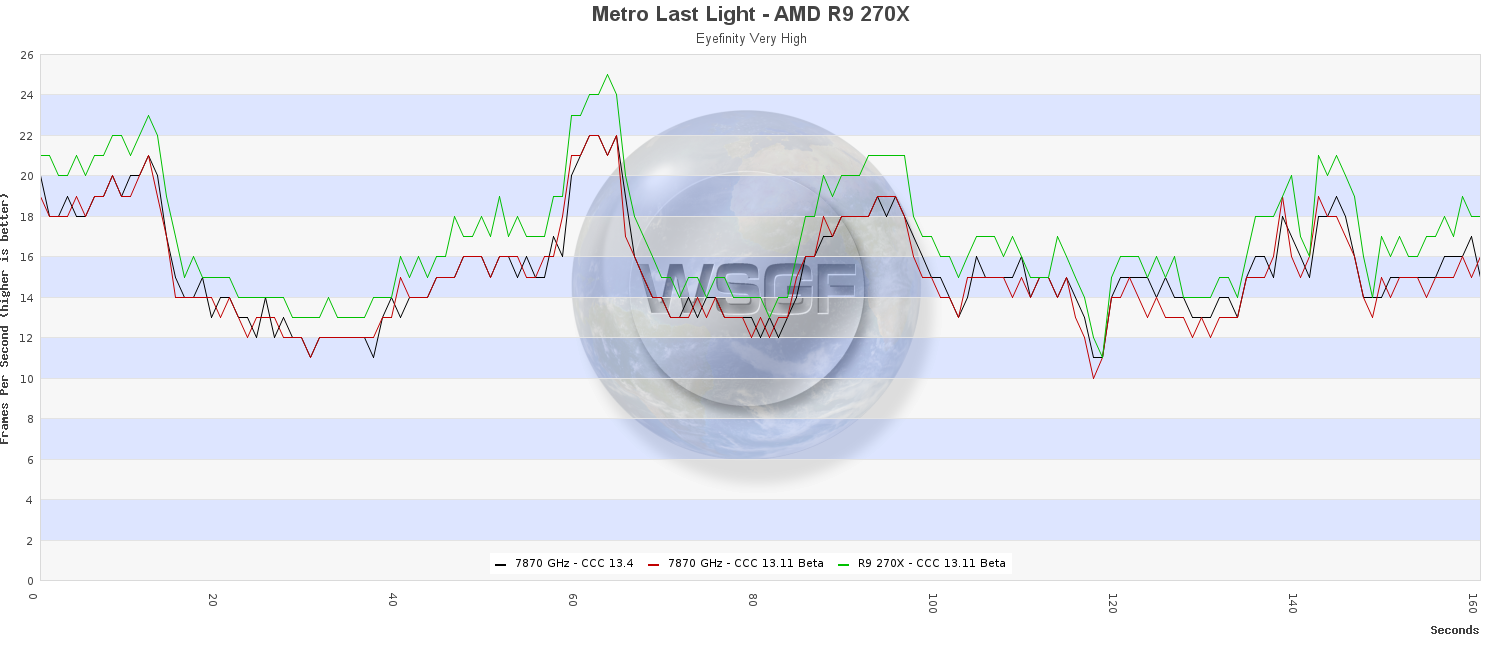



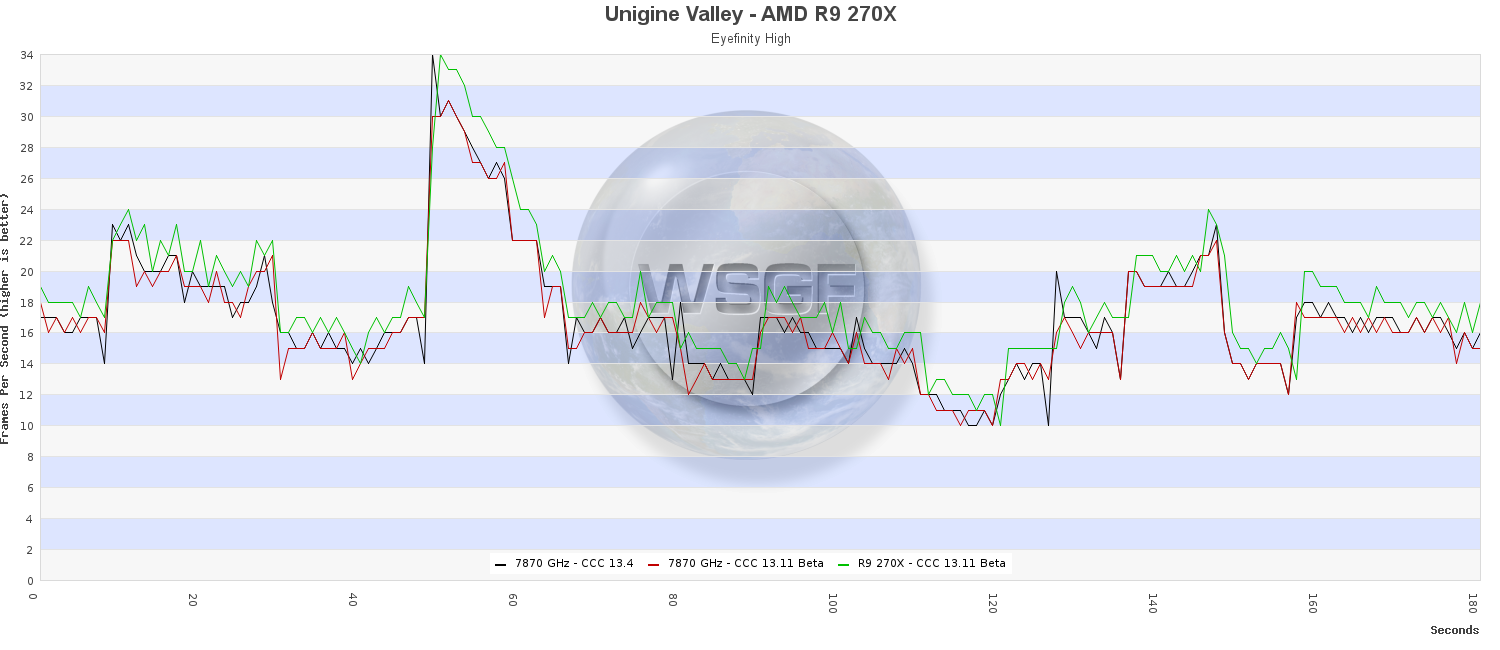
Radeon R7 260X
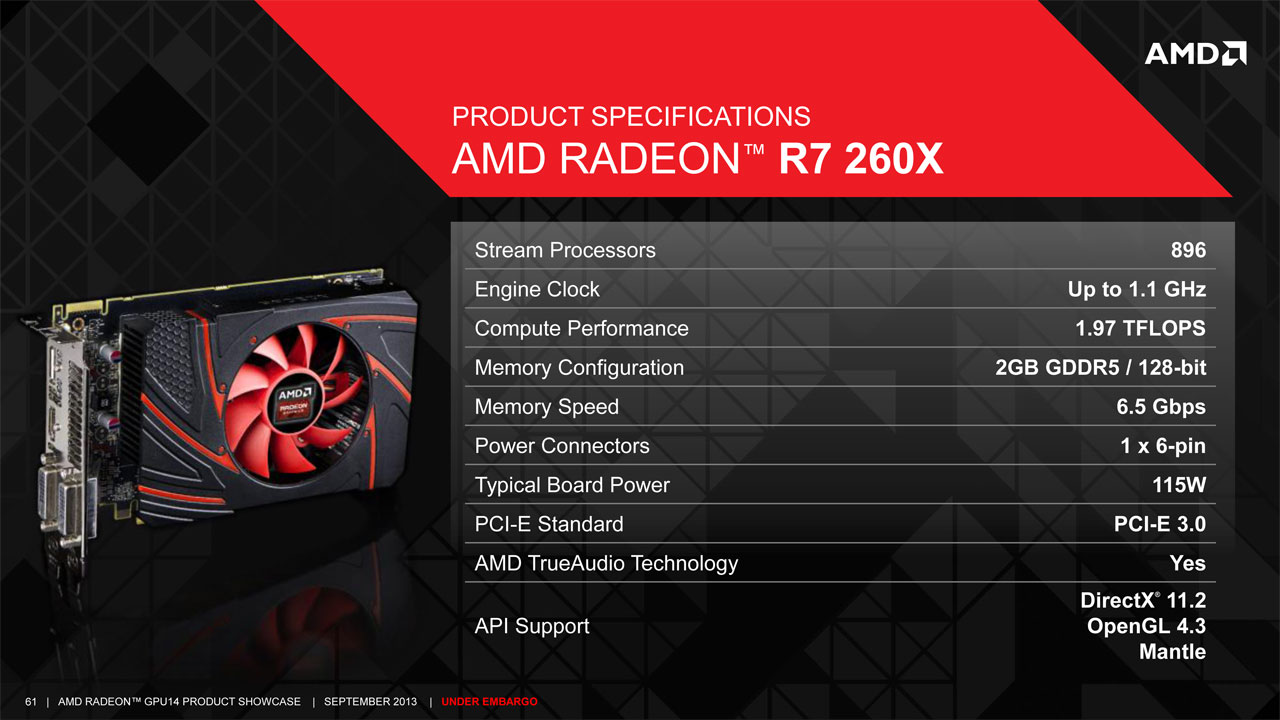 >
>
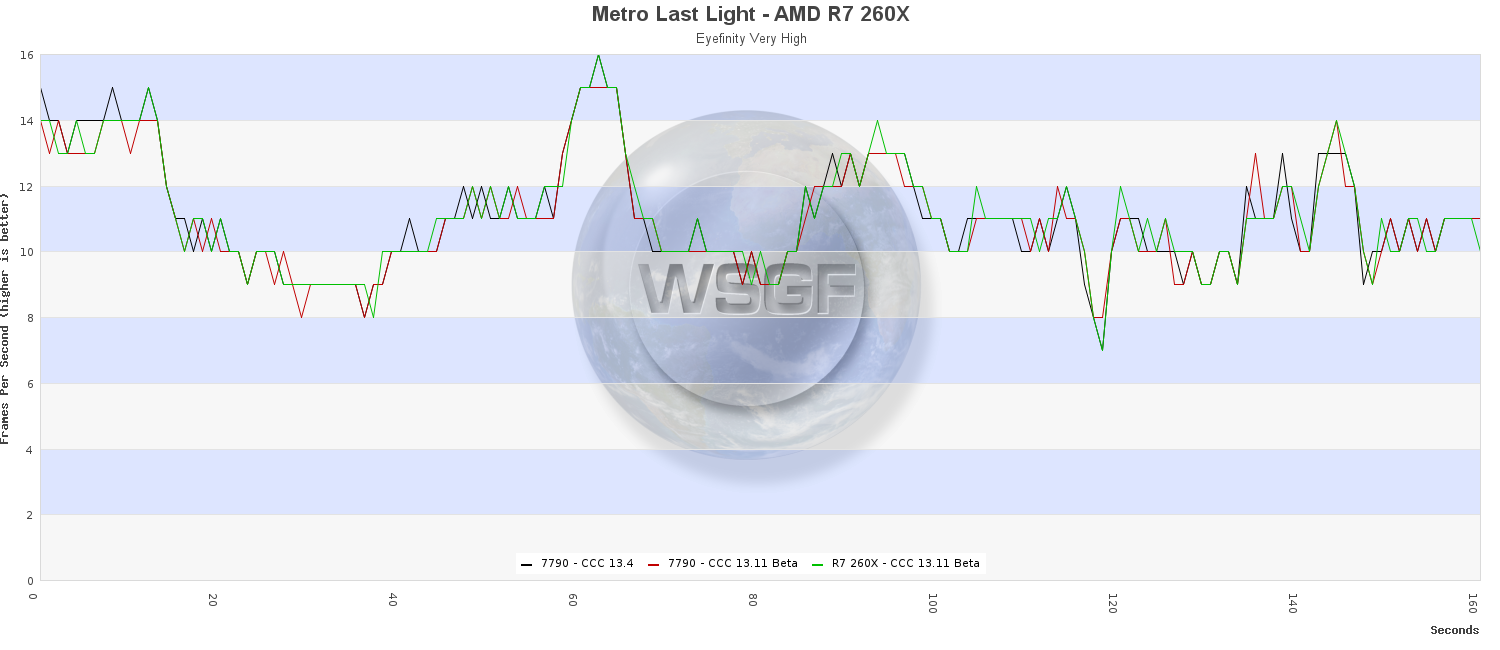
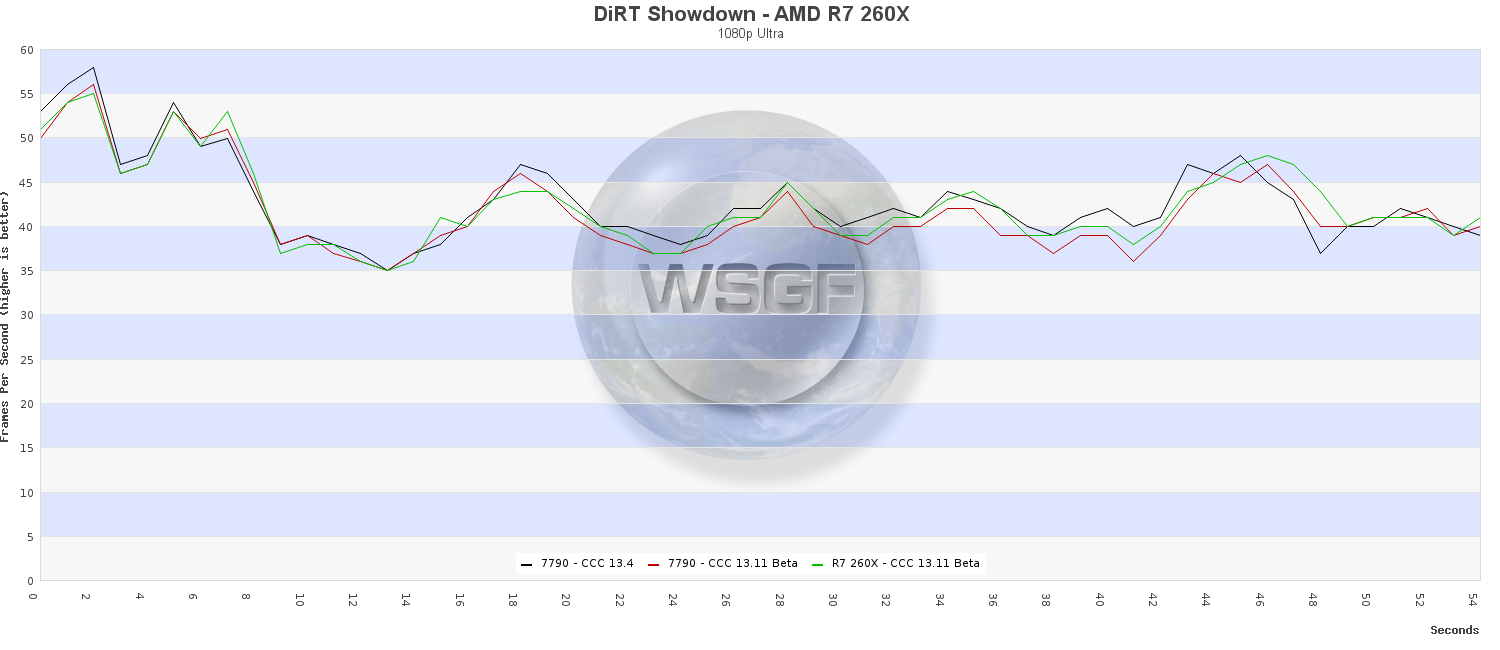


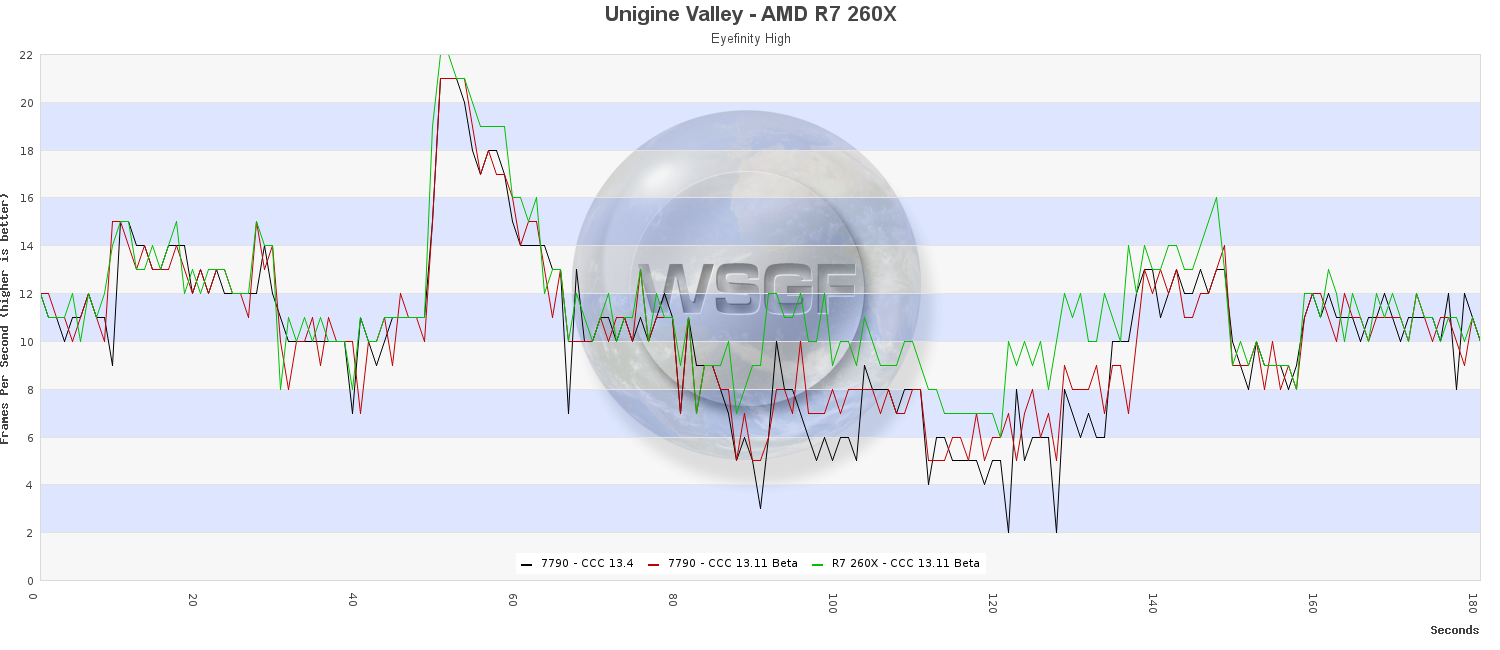
Conclusions
The new R7 and R9 cards are without a doubt re-releases of the previous flagship models in each tier. The performance is almost identical across each test - just now at a greatly reduced price. If you have an HD 7000 card, there is really nothing to see here. If you have an HD 6000 or HD 5000 card, this is a great time to upgrade. If you've got one older DVI monitor, check to see if you can get two matching models on the cheap. There's never been a cheaper or easier time to get into Eyefinity.
